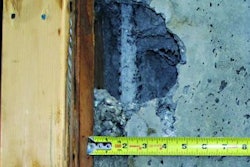Incline Village, NV - A new study shows that one road to energy savings could already be under the wheels of our cars: smoother pavements. Dr. Richard Willis, an assistant research professor at Auburn University, reported that modest improvements in the smoothness of pavements could save up to 2.4 billion gallons of gasoline and 900 million gallons of diesel for the U.S. every year - a total of 5 billion gallons of fuel for the vehicles being driven on our highways. In other terms, smoothing out America's roads and highways could save around $12.5 billion a year for the U.S. economy.
Willis and Auburn's Dr. Rob Jackson have just completed an analysis of more than 20 studies from throughout the world. At the Midyear Meeting of the National Asphalt Pavement Association, Willis presented a preview of a study that will be published soon by Auburn. He reported that smoothness is a pavement characteristic that has one of the greatest impacts on fuel economy. "We know that, of all the factors that influence fuel economy - vehicle aerodynamics, engine dynamics, ambient air temperature, tire geometry, vehicle speed, tire pressure, and so forth - there is only one that pavements can affect, and that is rolling resistance," said Willis.
Asked to define his terms, Willis said, "Rolling resistance can be thought of as the force required to keep tires rolling. It could also be thought of as the energy lost between the vehicle and the pavement. Of the two main influences on rolling resistance related to pavements - those due to the stiffness properties of the tire and those due to imperfections in the pavement surface - the pavement industry has the opportunity to influence only one, the pavement itself."
Willis broke down his numbers. "A study published by Schmidt and Ullidtz in 2010 showed that slight improvements in smoothness can reduce fuel consumption by 1.8 percent to 2.7 percent. Other studies suggest larger reductions of up to 4.5 percent. The Bureau of Transportation Statistics says that vehicles traveling on U.S. highways consumed 168 billion gallons of gas and diesel in 2009. AAA reported last week that the average price of gas was $3.66 per gallon and diesel averaged $3.93. Using a conservative figure of a 2.0 percent reduction in fuel consumption, we could thus save 3.3 billion gallons of fuel, or $12.5 billion, every year," he said.
Dr. Howard Marks, NAPA's Director of Environmental and Regulatory Affairs, was unsurprised by Willis's findings. "It is intuitive that smoother pavements are more fuel-efficient since less bouncing over rough pavements means less wasted energy. While it is possible to build smooth pavements out of either concrete or asphalt, asphalt pavements are easier to build smoother and to keep smoother over their lifetimes," he said.
NAPA President Mike Acott pointed out that rough roads also cost Americans billions for excess repairs. "The Road Information Program calculates that rough roads cost the average American motorist $324 every year - a total of $67 billion, just for extra wear and tear on vehicles. Adding this figure to the $12.5 billion in potential fuel savings, we can see that the U.S. could save nearly $80 billion a year by building and maintaining smoother pavements."
Acott added, "Congress and other policymakers are looking to incorporate green highway metrics in the pavement selection process. Legislation that has just been introduced in the House of Representatives - the Promoting Green Transportation Infrastructure through Research and Development Act - would identify the independent research studies and assessments in this field of research. This is a logical step in advancing the deployment of ultra-fuel-efficient pavements throughout the country and saving billions of gallons of fuel annually."

















